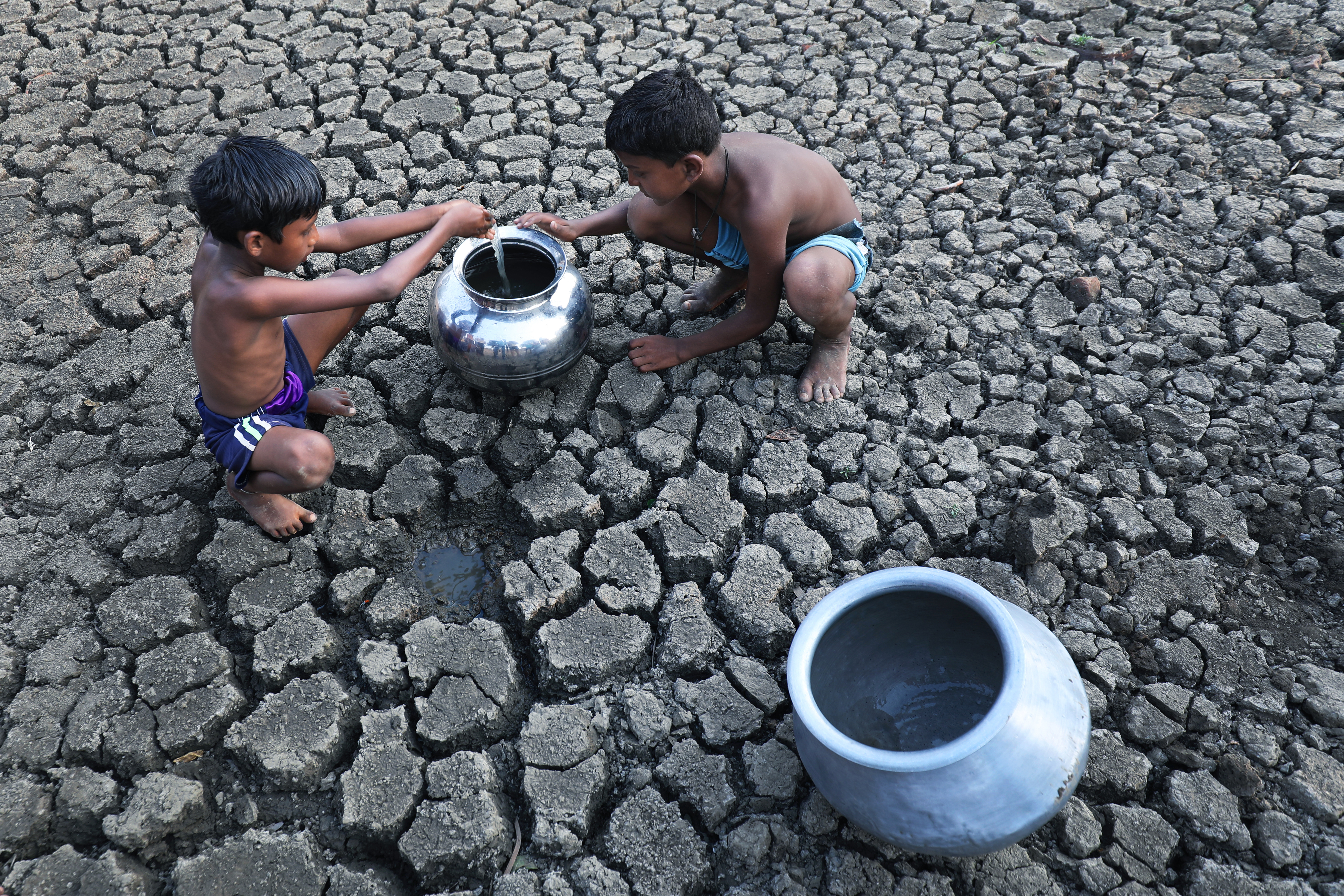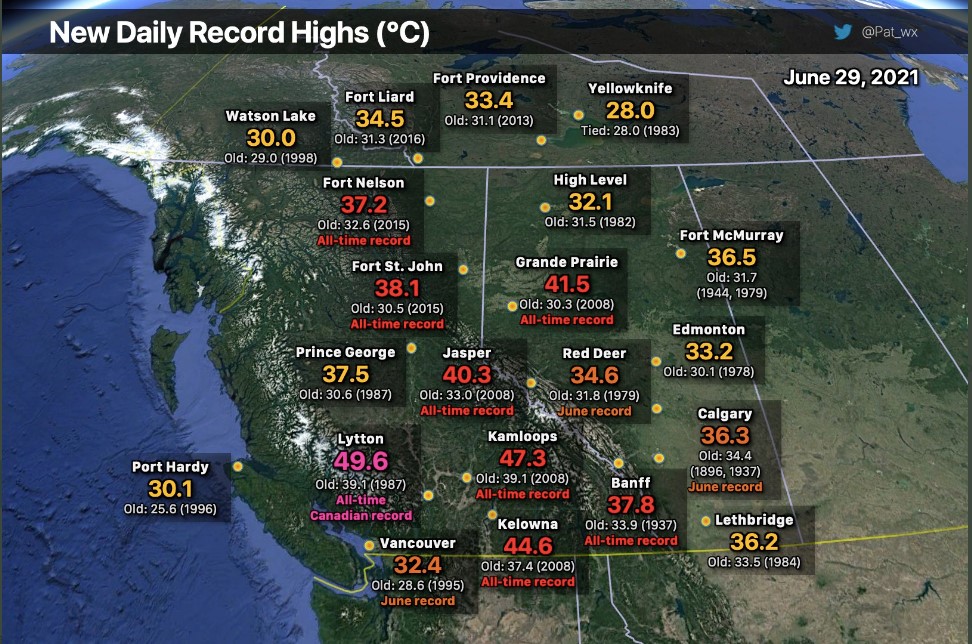

Record-breaking heat in Canada
On the week that the Government of Canada released a National Report on Climate Change Issues, an extreme heatwave moved into Western Canada. This report included the projection that under a 2°C global warming scenario, Vancouver, British Columbia, would see an increase to about 5 hot days per year (historically, Vancouver reaches 30°C once every 3 years). This week, Vancouver exceeded 30°C for four consecutive days!
Six days after record-breaking temperatures began, Heat Warnings still remain in effect for most of Western Canada (about one-third of Canada’s population) as folks attempt to celebrate Canada Day on the 1st of July. In fact, parts of British Columbia, Alberta, Saskatchewan and Manitoba are expected to remain under heat alerts for another 2 to 3 days (three-day forecast of well above normal temperatures in red).
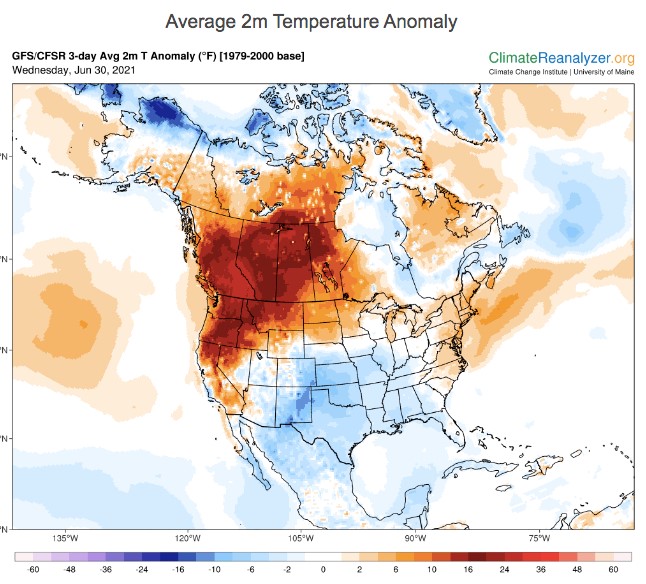
On June 29th, after breaking Canadian records for the two previous days, Lytton, British Columbia, recorded 49.6°C. This is the hottest temperature ever observed in Canada, crushing the previous record of 45°C set way back in July 1937 in Saskatchewan. Dr Robert Rohde from Berkeley Earth shared a graph that is frankly unbelievable, illustrating where the recent extreme temperatures are situated on the climatological temperature record for Lytton. In all of the United States, only locations in the southwestern deserts have ever reached or exceeded 49.6°C.
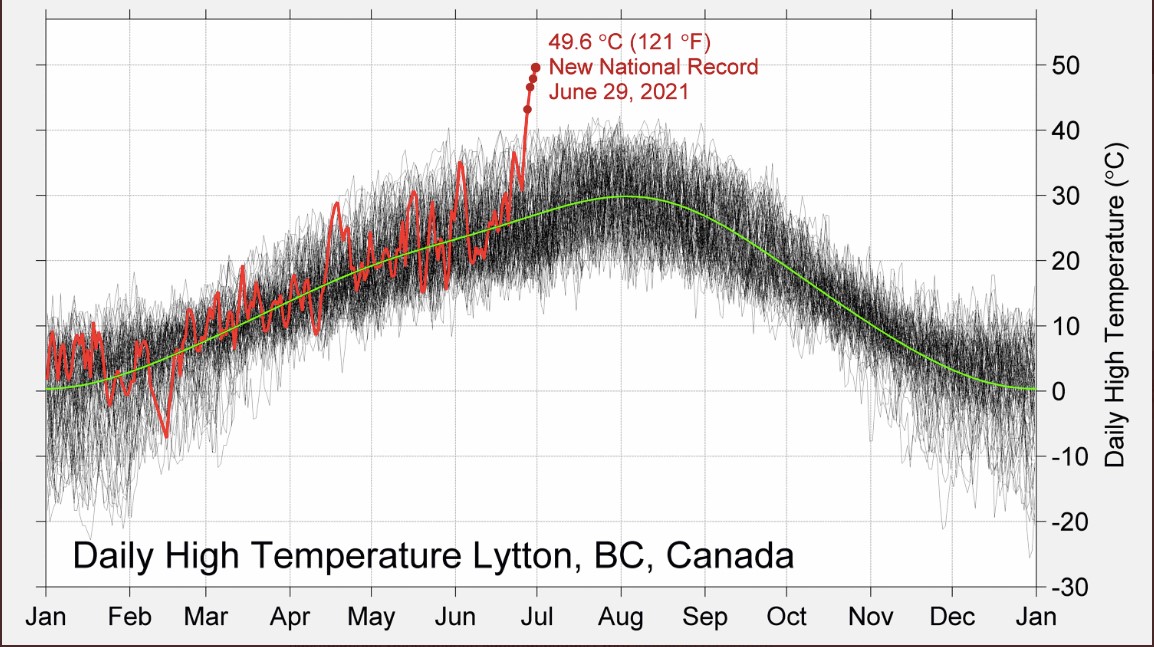
Canada is warming at twice the rate of the rest of the globe, and Northern Canada is warming even faster, at triple the rate. Perhaps for the first time on Earth, Fort Smith (North West Territories) may be the first site to have recorded 40°C north of 60N. Attribution studies will confirm the significant role that climate change played to enable such extraordinary extreme temperatures.
The figure below (courtesy of Patrick Duplessis, Dalhousie University) illustrates the numerous all-time records broken on June 29th, with 30°C record temperatures extending north of 60N.
Records like this are being shattered every day!
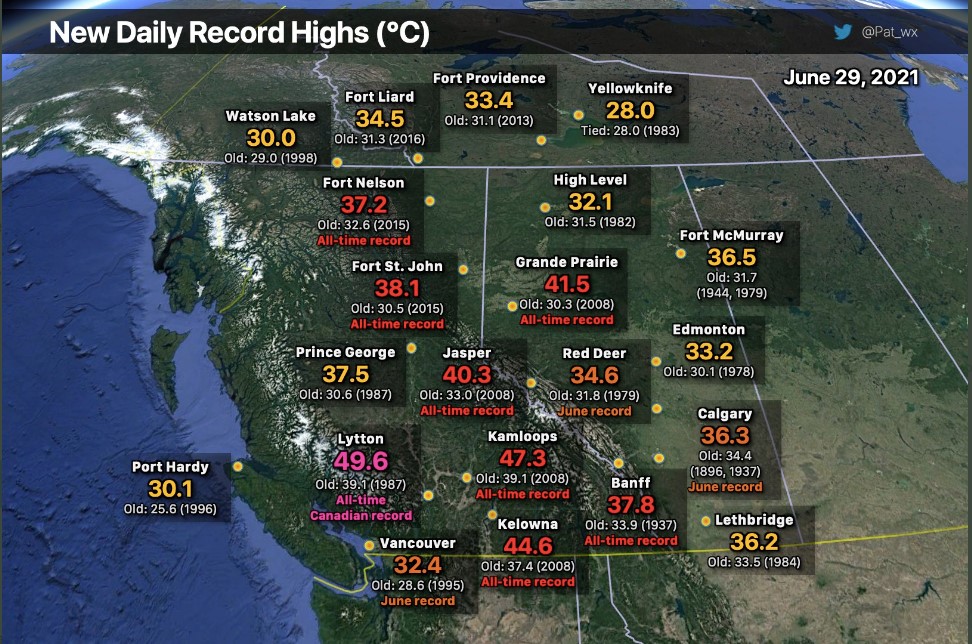
Most homes in British Columbia do not have air conditioning. As a result, the combination of extreme heat during the day, very warm nights (10°C or more above normal), and poor air quality has contributed to a substantial increase in emergency calls. Almost 500 sudden deaths have been reported in British Columbia over the first several days of extreme heat. As the heat persists, these statistics are unfortunately likely to rise, with vulnerable populations (like seniors) of other provinces in Western Canada, especially at threat.
The extreme heat also contributes to other climate related threats. With the freezing level rising above 6000m (20,000 ft), astounding melting is occurring in the mountain glaciers and snowpacks of the Canadian Rockies. Flood warnings have been issued for major rivers like the Fraser, in British Columbia. Advisories have also been issued for several rivers on the east side of the Rockies in Alberta. Meanwhile, further east in Alberta, low water advisories are in place.
The hot dry weather is creating an Extreme Fire Danger, and several large wildfires are burning in the Kamloops area of British Columbia. On Wednesday evening (one day after breaking the Canadian high temperature record), a wildfire near the village of Lytton has resulted in an evacuation order for the whole community. Lightning storms are developing along the west coast, risking further ignition and wildfire threat. This heat and lack of rainfall early in the summer may result in widespread wildfire risk in Western Canada this summer.
Why has it been so hot?
The extreme heat was enabled by the building of an anomalously large and very slow-moving ridge of high pressure in the upper atmosphere. This pattern, more typical of the Southwest USA, is referred to by some as a “Heat Dome”, in which the hot air is “trapped” by this blocking pattern, often referred to as an Omega block given the shape of the pattern as shown in the figure below.
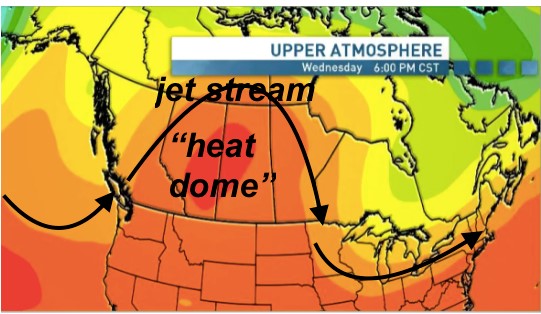
Heat, drought, poor air quality, floods and wildfires are expected to worsen with climate change. Western Canada is experiencing all of these in a one-week period... while attempting to recover from the COVID-19 pandemic.
About the author:
Jim Abraham is the President of the Canadian Meteorological and Oceanographic Society, the national society of individuals and organisations dedicated to advancing atmospheric and oceanic sciences and related environmental disciplines in Canada. The history of CMOS goes back to 1939, when it was the Canadian Branch of the Royal Meteorological Society.
Jim Abraham spent his 36-year career with the Meteorological Service of Canada, managing a number of operational and research programs. His proudest achievement was the launch of the Canadian Hurricane Centre. He also led a research program that involved reconnaissance aircraft flights into tropical systems affecting Canada. Jim survived :-)


